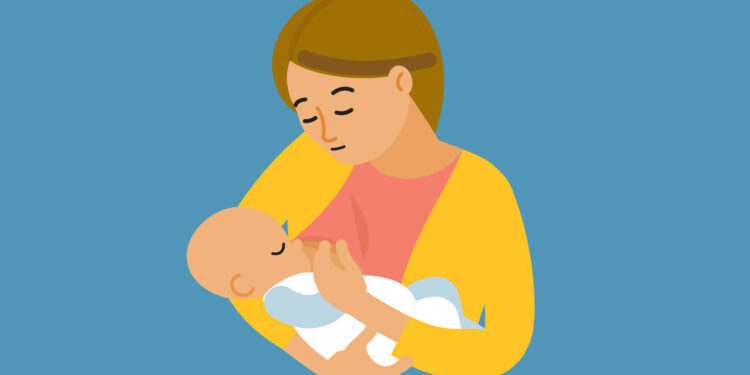Breastfeeding is a natural and excellent way to nourish your little one, but it can also come with some challenges, particularly when finding the right position for you and your baby. While there’s no one-size-fits-all solution, experimenting with different positions can help you find the one that works best for you and your baby.
In this article, we’ll explore some of the most popular breastfeeding positions, their benefits, and tips for ensuring a comfortable and successful feeding session.
Benefits of Finding the Right Breastfeeding Position
Finding the right breastfeeding position can have many benefits for both you and your baby. One of the main benefits is that it can help your baby latch on properly and reduce the risk of nipple pain or soreness. In addition, when your baby is positioned correctly, they can easily and effectively latch onto the breast, which can lead to a more comfortable and efficient feeding session.
In addition to reducing discomfort, finding the right position can improve your baby’s digestion and reduce the risk of reflux. This is because when your baby is positioned correctly, they are less likely to swallow air while feeding, which can lead to gas and discomfort. By reducing the amount of air your baby swallows, you can help prevent colic and other digestive issues.
The right breastfeeding position can also help you relax and bond with your baby. When you are comfortable and not experiencing pain or discomfort, you can focus on the special moment of feeding your baby and enjoy the emotional connection that breastfeeding can provide. Additionally, skin-to-skin contact and eye contact during breastfeeding can promote feelings of closeness and love between you and your baby.
Finding the right breastfeeding position can lead to a more enjoyable and successful breastfeeding experience for you and your baby.
Common Breastfeeding Positions
Mothers use several common breastfeeding positions to feed their babies, each with its own set of advantages.
Cradle Hold
The cradle hold is one of the most common breastfeeding positions, in which the baby lies across the mother’s lap with their head resting in the crook of the mother’s arm. This position allows for eye contact and easy access to both breasts.
Cross-Cradle Hold
Similar to the cradle hold, the cross-cradle hold involves holding the baby across the mother’s lap with the opposite arm to the breast being used for feeding. This position is particularly helpful for newborns or premature babies who need extra support.
Football Hold
Also known as the clutch or underarm hold, the football hold involves tucking the baby under the arm like a football with their legs and feet tucked under the mother’s arm. This position can be helpful for mothers with a C-section or mothers with larger breasts.
Side-Lying Position
The side-lying position involves lying on your side with your baby lying next to you, facing your breast. This position can be particularly helpful for nighttime feedings or mothers who have had a difficult delivery.
Tips for Ensuring a Comfortable and Successful Feeding Session
In addition to finding the right position for breastfeeding, there are several tips and tricks that can help ensure a comfortable and successful feeding session.
- Use pillows or cushions to support your baby’s head and your arms.
- Ensure your baby is properly latched to avoid discomfort or pain.
- Make sure your baby’s nose and chin are both touching your breast.
- Take breaks if needed, and switch breasts if your baby is still hungry.
- Stay hydrated and nourished to ensure optimal milk production.
Conclusion
Finding the right position for breastfeeding is crucial to ensuring a comfortable and successful feeding session for both mother and baby. Experimenting with different positions and utilizing pillows or cushions for support can help you find the position that works best for you and your little one. Remember to prioritize your comfort and health, as well as your baby’s, and don’t hesitate to seek the advice of a lactation consultant if you’re experiencing any difficulties.















